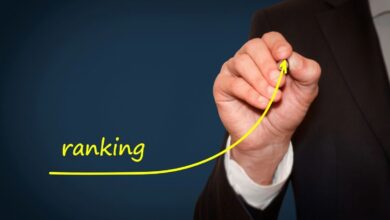
SEO is the process of optimizing a website for organic search results. This means creating a website that is easy to find on search engines and includes appropriate keyword placement. It can be a challenging and time-consuming process, but with careful planning and execution, you can achieve great results. Here are eight tips for becoming an SEO expert:
On-page Optimization:
On-page, optimization is the practice of optimizing a web page for specific keywords or phrases. This can be done through the use of on-page elements such as title tags, meta descriptions, header tags, and images. It can also be done by inserting keyword-rich text throughout the page. Page, optimization is a key element of SEO and should be done in conjunction with off-page optimization techniques.
Keyword Research:
SEO is one of the most important aspects of online marketing and should not be taken lightly. Many techniques and strategies can be used to improve your website’s ranking on search engines, but the most important part of SEO is choosing the right keywords.
Choosing the right keywords is essential for two reasons. First, you want to target keywords that have a high search volume so you can get as much traffic as possible. Second, you want to target keywords that have low competition so you can easily rank in the top spot on Google.
There are a few different ways to find the right keywords for your website. The first way is to use Google AdWords Keyword Planner. This tool allows you to see how many people are searching for a particular keyword each month, as well as how competitive the keyword is.
Title Tags:
There’s no question that title tags are important for SEO. But what makes a good title tag, and how can you make sure your titles are effective?
Title tags should be around 50-60 characters long, including spaces. They should include the main keyword or phrase for the page, as well as any other relevant keywords.
Title tags are also a valuable place to put your company name or brand. And don’t forget to use modifiers like “best,” “top,” “new,” and “latest” to help your titles stand out in search results.
You can use a tool like the Yoast SEO plugin for WordPress to help you create effective title tags. Or if you’re using another content management system, there are likely similar tools available.
Meta Descriptions:
When creating a website, it’s important to include meta descriptions and keywords. Meta descriptions are the short blurbs that appear under the blue links in search engine results pages (SERPs). They provide potential visitors with a summary of what the page is about.
Including keywords in your meta descriptions can help improve your site’s SEO. Keywords are the words and phrases that people type into search engines to find information. When you include them in your meta descriptions, you’re telling search engines that your page is relevant to those keywords. This can help your site rank higher in SERPs.
Header Tags:
Header tags are important for on-page optimization. They help to identify the main topic of a page and help search engines determine the relevance of that page to specific keywords. Header tags also help to break up the content on a page, making it easier to read.
There are six header tags, ranging from h1-h6. The h1 tag is the most important, as it is the title of the page. The remaining header tags should be used in order of decreasing importance. h2 tags are usually used for subtitles, h3 tags for sub-sub titles, and so on.
Header tags should be used to target specific keywords. It’s important to use a variety of keyword research tools to find the right keywords for each page.
Image Optimization:
SEO is the practice of optimizing a website to rank higher in search engine results. Many techniques can be used, but one of the most important is image optimization. Images can be a great way to improve your SEO, but they need to be properly optimized to get the most benefit.
The first step is to make sure your images are as small as possible. The smaller the file size, the faster your page will load and the less bandwidth it will use. You can use a tool like ImageOptim to reduce the file size of your images without compromising their quality.
The next step is to choose the right file format. JPEG is generally a good choice for photos, while PNG is better for graphics and text. You should also use a compressed format like ZIP or GZIP when possible.
Anchor Text:
Anchor text is an important part of on-page optimization, and is one of the easiest ways to help improve your site’s SEO. By using the correct anchor text for your links, you can help to improve your site’s ranking in search engine results pages (SERPs), as well as help to target specific keywords that you would like to rank for.
There are a few things to keep in mind when using anchor text:
- Use keyword-rich anchors – When linking to other pages on your site, make sure to use anchor text that includes your target keywords. This will help to improve your site’s ranking for those keywords.
- Don’t overuse keywords – While it is important to use keyword-rich anchors, don’t go overboard.
Internal Linking:
Internal linking is one of the most important aspects of SEO. When done correctly, it can help you improve your website’s ranking on search engine results pages (SERPs).
There are a few things you can do to optimize your internal linking:
- Use keyword-rich anchor text. This will help Google understand what your page is about.
- Make sure your links are relevant to the content on the page they’re linking to.
- Avoid using too many links on a page. This can make your content difficult to read and may negatively impact your ranking in SERPs.
- Place links where they’re most likely to be clicked by users. This will help you increase traffic to your website.
Blog Post Structure:
There are a few things to remember when structuring a blog post for SEO. The first is to make sure the title is catchy and keyword-rich. The second is to use headings and subheadings to break up the content and help the reader scan it easily. And finally, use lots of images and videos for additional engagement.
Conclusion
Becoming an SEO expert is not as hard as it may seem. By following the tips provided in this article, anyone can become a skilled SEO practitioner. Additionally, many online resources and courses can help you become an expert in this field. So what are you waiting for? Start learning today and become the SEO guru your business needs!
Learn more from SEO and read SEO Experts Are Frustrated by Web Design Practices.





One Comment